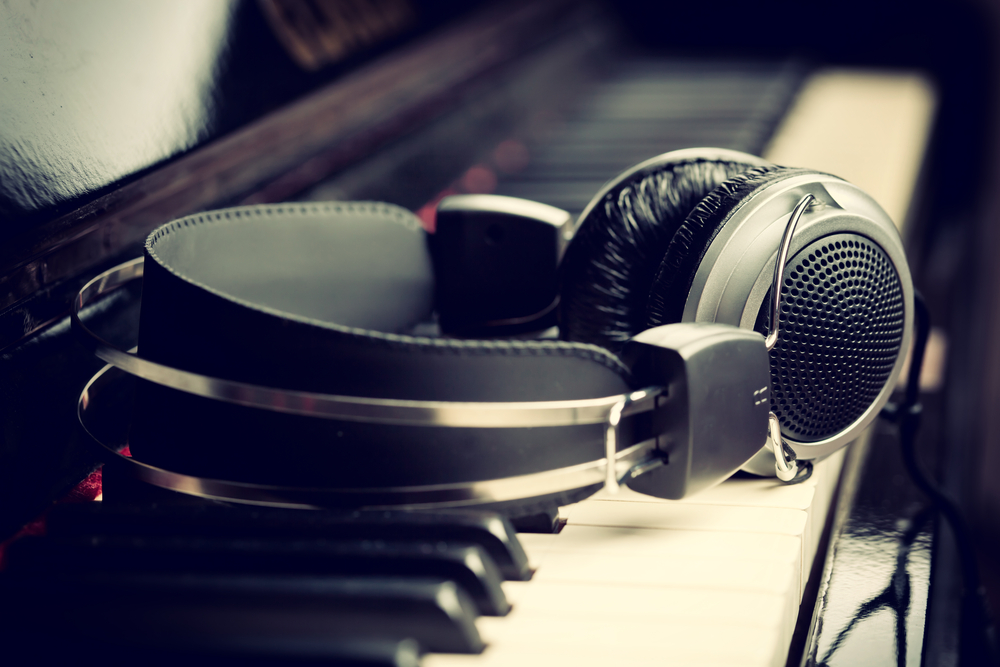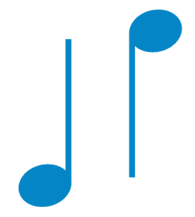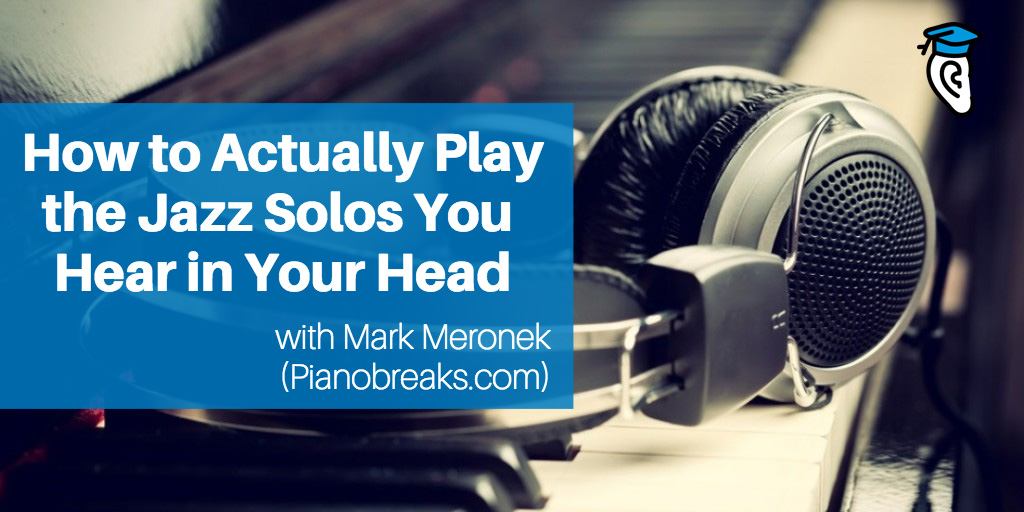Do you wish you could bring the jazz solos in your head out into the world through your instrument? You can learn how from Mark Meronek, the founder of Pianobreaks.com which provides a range of tutorial videos for learning jazz piano. Mark contributed a great answer to our recent jazz ear training which we are now glad to bring you in full. Read on to discover Mark’s top advice for effectively training your ears to improvise in jazz. Over to you, Mark!
There is so much that I want to say, but I also want to keep it simple, so first I’ll answer a question that I wished that I’d been told the answer to before I ever took ear training classes:
“Why should I even ear train at all? How does this help me as a musician?”
My answer: To me, many techniques and skills in music are a means to an end. Learning chords, scales, licks, how to evoke certain emotions with different chord structures, melodies, and getting better at ear training (a.k.a. learning to listen) are all a means to an end, which is:
To be able to sit, play with nothing on your mind, and enjoy yourself like you only can when you play an improvisation, straight from the heart.
Improvising from the Heart (using your Ears)

How does ear training help you play an improvisation straight from the heart?
Well, if improvisation is listening to what is going on around you and playing music organically that matches your feelings at that particular moment in time (my short definition!) then ear training is all about being able to listen to the feelings that are evoked in you when you hear different chords, intervals, and melodies, for you to be able to replicate that feeling, or even those exact notes in that exact order, on your instrument.
Said as simple as can be:
Ear training makes it so that you can hear what comes next in your improvisation in your head and then play it.
You can also use ear training to figure out chords and melodies that you’ve heard in the past, like writing it down on sheet music (transcribing) and figuring out future melodies that sound right to you in much the same way as you figure out an improvisation (or compose). For this article we’ll just stick with ear training’s importance to improvising.
So to me the power of ear training lies in being able to translate what you hear in your head or around you into a perfect execution of the same thing on your instrument.
It can help you communicate with other band members too, because they can play a set of notes, and you can play it right back to them. There might be some minor mistakes the first few times around, but in a few tries you can be playing the exact same notes that they’re playing, and with the exact same rhythms, so it’s like they’ve communicated a new idea to you that you can try out in your own playing. It’s a truly invigorating experience, and it feels much like being understood in an interpersonal way. You “get” what they mean!
This is why ear training is important in improvisation, because:
- You can hear the notes that you want to play in your head (or the feeling that you want to convey) and then translate that into music seamlessly on your instrument.
- You learn to listen to notes for the feeling behind them, which is one of the most important, if not the most important, skill for a musician to have, because you can understand and respond to what another person or persons are playing.
So you may be saying to yourself “Yeah I understand that it’s important, but how do I get better at ear training and ‘listening for the feeling of the notes?’”
Well, if ear training is “finding out what different intervals, chords, scales, and notes feel and sound like to you, and being able to recognize them accurately,” then to get better at ear training, here are a few tips that I’ve found that have been the most useful to my students as well as myself:
Focus on the Feeling of Different Intervals and Chords
If you know the basics of music theory my first advice is to get to know what common intervals and chords sound like, and most importantly feel like to you, in your body.
Play any chord you know and try to feel the chord that is being played on a physical level, as a full-body experience.
You can do the same thing with intervals or even single notes.
This may sound funny, but I am absolutely dead serious, and it is so important that you learn to really feel the notes, intervals and chords that you’re playing.
If you’re doing it right, it should feel like that chord or interval is the most important thing in the world to you at that time and you can feel it directly almost reverberating through your body either softly or loudly.
To me that feeling is the most important thing in ear training, and I hope you will begin to see that it is not just a silly thing to do (although it can feel silly at first!) If you consistently feel the notes that you are playing it becomes an incredibly important part of playing that will cause a ripple effect across everything you play.
Which Intervals and Chords Should You Learn?
So if intervals and chords are the important elements to learn to play and feel for improvisation, what exactly should you be studying?
Interval Ear Training
 As far as intervals are concerned, learn all of them.
As far as intervals are concerned, learn all of them.
There aren’t that many, and you don’t need to become an interval genius, (unless you want to of course!).
Some people can get quite bored after a while just practicing intervals (myself included), so aim to get a general grasp on what a 3rd sounds like, what a 4th sounds like, then a 5th, a 6th, a minor 3rd, a flat 2nd, etc.
These will come in handy, and make jazz theory and improvisation so much easier, because you are able to hear the next note that you want to play in your head (a flat 3rd?) and then play it in reality, matching what you were thinking. This is such an invigorating feeling, and just incredible.
You’ve got to experience that feeling, where you are able to hear or feel a note that you want to play in your head, and then be able to execute it immediately like you are some kind of magician.
If you are still a beginner, no need to go above the 9th. I would recommend also knowing what note the 10th, 11th, and 13th are from a theory standpoint.
Quick tip: for compound intervals (meaning bigger than the octave) just subtract 7 and it gives you the name of the note. For example with the 10th, 10-7 = 3 which means the 10th is the same note as the 3rd, just played higher up.
Chord Ear Training
 For chords, I would look at major chords, minor chords, dominant 7th chords, diminished chords, and half-diminished chords (also called minor 7 flat 5 chords).
For chords, I would look at major chords, minor chords, dominant 7th chords, diminished chords, and half-diminished chords (also called minor 7 flat 5 chords).
Most of those chords have very distinct differences, so it is easy to tell them apart from each other.
Here’s a very quick summary:
- Major chords are usually described as happy, bright, or light sounding.
- Minor chords are generally described as dark, sad, or sombre.
- Dominant 7th chords sound like they want to go somewhere, or are tense and want to resolve to another chord (the I chord).
- Diminished chords and half-diminished chords generally sound scary and like they have an “anxiety-inducing” feeling to them.
These chords are a really great place to start, because they are the most common types of chords you’ll find in jazz standards. If you can start feeling the differences between them (like you just play a C major chord, then a C minor chord, and listen for the difference between them), then you’ll start being on your way to differentiating more and more chords as you go along.
Once you learn to tell these chords apart, it will not only help you with your own improvisations, because of being able to “hear” that major chord sound in your head, and then play those notes on your instrument, it will help you also know intuitively which chords are being played so you can figure out chord progressions more easily in future songs that you want to learn.
Listen to Your Favorite Solos And Sing Them
 Singing solos, in parts or even the entire thing along with the soloist as they play it, is the most powerful thing I know of to improve rhythm, and to learn new licks and soloing ideas at the same time.
Singing solos, in parts or even the entire thing along with the soloist as they play it, is the most powerful thing I know of to improve rhythm, and to learn new licks and soloing ideas at the same time.
The reason it’s so powerful is that when you sing a solo and then play it, you are forced to really internalize the rhythms and the soloing ideas of a professional jazz musician, and you kind of get on the same “wavelength” and feel what that feels like, to be coming from the state of mind that they were coming from. You’ll find yourself asking questions like “Why did he play that there?” and “What’s that rhythm? I’ve got to get a handle on that so I can incorporate it into my own solo!”
You’ll also pick up the accents, the articulations, the swung feel or “groove” that is being played, and all of the ways of expressing emotion that the musician brings along too that are unique to that artist but you can adapt into your own playing.
To make sure you get the benefits of this kind of vocalization though, try to be as precise as you can be, especially with the soloist’s rhythm, and really hit the notes as if you are the soloist soloing as you vocalize along with the track.
In fact the passion that you put into it and the more precision that you sing along to it with will determine how much impact it has for you.
How do you learn to vocalize and to sing? Easy Ear Training already has some singing tutorials, and I would look up more “jazz vocal improvisation” on YouTube as well.
I used to do this by learning Chet Baker solos from beginning to end through transcriptions (sheet music), then vocalizing and playing them until I felt I had really gotten the “feeling” that Chet Baker was trying to convey, and felt I could convey it well myself.
If you know how to read music you can do the same. The transcription will allow you to play the solo on your instrument, which really increases the benefit to your playing.
If you can’t read music, vocalizing by ear will still help you internalize rhythms and help you in all of the other articulations and accents that will find their way into your playing. You can always start to learn the solos on your instrument after you learn to read music.
My recommendations for picking solos are that: they are slow and easy to vocalize at first, and picking an easy instrument to vocalize like a trumpet or a saxophone, rather than an instrument that plays chords, like a piano.
There is nothing I’ve seen that comes close to the power of vocalizing solos from jazz songs, and learning to play the licks or rhythms that you have learned to sing on your instrument along with the original track.
Thank you for reading, and I hope you found these tips helpful! By training your ears in these ways you will be able to play more easily from the heart and express yourself directly through jazz improvisation.
Thank you Mark for sharing these insightful tips on how to do ear training for improvising jazz! If you want to get started you can learn more with the excellent video tutorials at Mark’s website Pianobreaks.com.


 Click to tweet
Click to tweet





